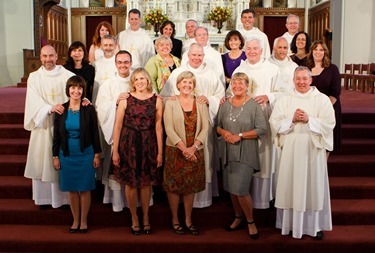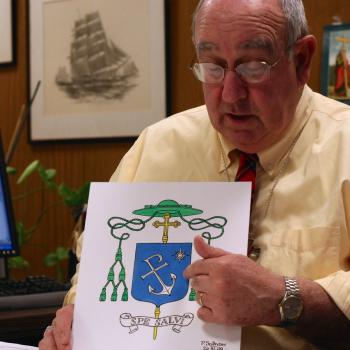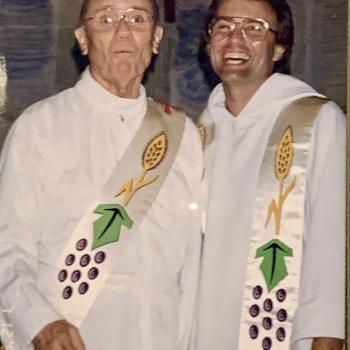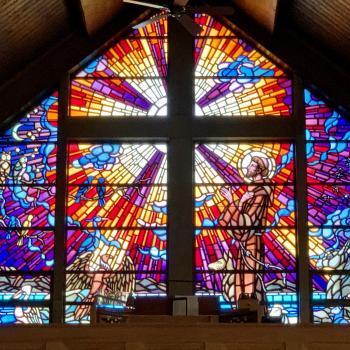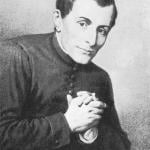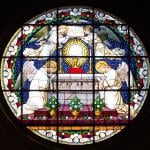This arrived in the mail a few weeks back, and I’m just now delving into it: a new book on marriage and the diaconate called “Love Becomes Service,” (published by Dufour Editions) by Msgr. Michael Chaback, director of the Office of the Permanent Diaconate for the Diocese of Allentown.
While somewhat academic in its approach—Msgr. Chaback notes in his introduction that this slender volume grew out of part of the diaconal formation program in the summer of 2012—there’s a lot of valuable, challenging material here.
As he notes:
The following reflection was written as a pastoral response to a concern shared by many of the wives of our permanent deacons…Most diaconal couples readily recognize that it is the husband who is ordained and not the wife. The wife’s role is commonly expressed as making her husband’s becoming a deacon possible by her willingly giving affirmation and support. Many certainly have done so and have experienced a positive and enriching journey together with their husbands. But there are also some whose experience has been less than positive and who, more often than not, remain silent.
Msgr. Chaback uses as his reference point N. 61 of the Directory for the Ministry and Life of Permanent Deacons—a passage that looks at marriage this way:
When lived in faith, this family service is for the rest of the faithful an example of the love of Christ The married deacon must use it as a stimulus of his diakonia in the Church.
So how does he do that? How does the deacon integrate his marriage with his ministry? How does one feed the other? Msgr. Chaback’s book offers a series of questions for reflection and discussion, and he then includes his own reflections that can serve as a valuable springboard to a deeper understanding of marriage within the diaconate.
Frankly—as many wives have told me—the Wife of the Deacon role is one the Latin Church is still struggling to understand and integrate; it’s hard to know the rules or boundaries, since this is all relatively new. Some priests are still uncomfortable (or worse, dismissive) when it comes to dealing with having a clergyman’s spouse around the rectory. Others go overboard trying to include her in everything—to the point of almost making her a “co-deacon” with her husband. It can be difficult to strike the right balance. Msgr. Chaback acknowledges as much:
What her deacon husband gives to the Church could never be given without her, and yet, in the end, it is he who is the deacon, who in ministry alone publicly signs the servanthood of Christ. Like Mary, the Mother of the Redeemer, she will often find herself looking on from afar. As Mary learned, she too must learn when to speak and when to be silent, when to stand beside the one for whom she cares the most, and when to stand aside. She will need to acquire the strength of a prudent spirit and a discerning heart, knowing what is the right thing to do and how to do it at the right time. She will always need to be present to her husband, and the power of her presence can never be discounted. But presence takes many forms, and knowing how to choose among them in the varied moments of his ministry will always be her challenge. Helping her acquire the strength and the wisdom she will need is the responsibility of the Church that called her husband to become a deacon.
As I said: challenging stuff.
But I think “Love Becomes Service” is a helpful addition to the growing library of books that are studying the diaconate and helping to clarify its form and function in the modern Church. At the very least, this book can be a great conversation-starter, and get husbands and wives talking about the two entwined vocations that absorb their lives—marriage and the diaconate.
Pick it up, read it, and let the conversation begin.
Photo: Gregory L. Tracy / The Boston Pilot

